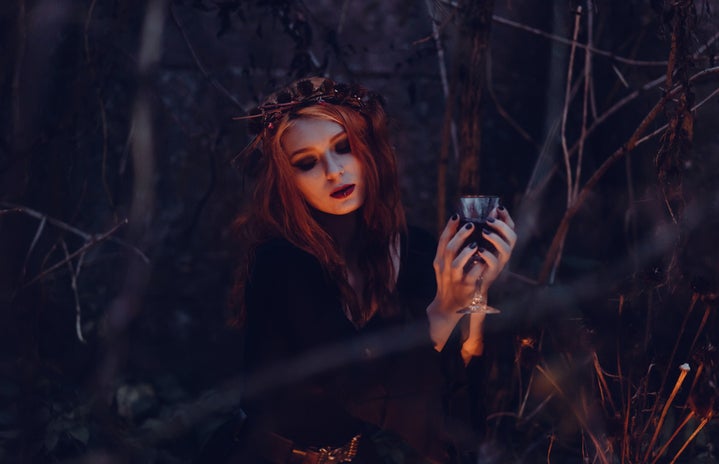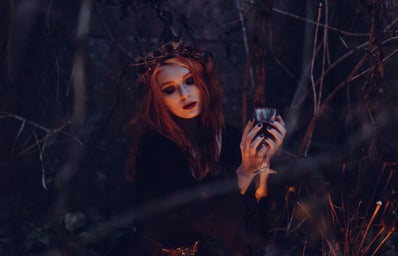Content Warning: This article contains discussions of sensationalized depictions of violence against women, as well as vague spoilers for a few popular horror films.
The horror genre encompasses a vastly diverse range of stories and themes. From slashers to classic hauntings to psychological thrillers, horror as a framing tool opens up a world of possibilities. Even so, every genre has its shortcomings, and horror has historically treated its female characters in a manner that is cause for concern.
The traditional slasher is a major culprit of this (though horror, in general, does share the blame). The slasher subgenre refers to any movie in which an often masked killer pursues and murders a group of people. Your stereotypical slasher film could take place at a summer camp or highly populated location, though movies like Hitchcock’s “Psycho” would also be applicable in this category, despite lower body counts. Slashers have the capacity to be fun, thrilling stories that get audiences jumping out of their seats with relatable characters and just the right level of stakes.
Still, slasher films are distinctly gendered. The classic horror movie shows women as hysterical, screaming damsels in distress. In response, men take on the role of the killer or the ones protecting women from being killed. Though men do die in slashers, it’s the female characters who are most often the primary targets of the antagonists. Women are relatively passive participants—they either die or survive.
It’s not random chance that decides who lives or dies, though. In most popular slashers, the women who die are those who are sexually active. This correlation can be pretty overt, too; some movies see the women being killed almost immediately after having sex.
The final girl trope is another component of this dynamic. The final girl is a female character that survives until the end of the movie. She is traditionally portrayed as more intelligent than the other victims. She encounters terrifying situations and reacts to each with the amount of screaming and crying that one might expect, but she comes out the other side. The final girl is also, as it is often made explicitly clear, a virgin.
The messaging here is clear: “promiscuous women” (which is terminology I hesitate to use in the first place) are punished for their behavior, while “pure women” are rewarded for their morality. Without delving into too many spoilers, some of the most prominent horror movies like “Halloween” and “Friday the 13th” feature this trope.
Then came “Scream.” Directed by Wes Craven and released in 1996 at a time when the horror genre was almost entirely sequels, “Scream” was something that had never been seen before. It’s a postmodern, self-referential meta-horror, and it served as the perfect satire for what its contemporaries had become. Essentially, it’s a movie that is aware of its status as a movie. Characters are constantly referencing other horror films and how their story might play out in a cinematographic context.
One of its most iconic scenes sees secondary character Randy delivering the rules to successfully survive a horror movie, which are as follows:
-
You may not survive the movie if you have sex.
-
You may not survive the movie if you drink or do drugs.
-
You may not survive the movie if you say “I’ll be right back,” “Hello?” or “Who’s there?”
These rules pose a sardonic take on the repetitive plot devices and arcs used by horror movies at the time. Aside from being a brilliant use of irony, Randy’s rules also call out the more problematic benchmarks of the genre. Though rule #1 doesn’t specify gender, it’s most often women who are being policed by it.
Horror films can also be even more obvious in their mistreatment of women. Exploitation films and “torture porn” represent entire subgenres in which the objective seems to be showing violence and gore, which are sometimes sexually motivated, in the most sadistic ways possible. Think: “Human Centipede,” “Hostel,” or even the somewhat tamer “Saw,” the sequels of which got progressively gorier. In this writer’s opinion, shock-value violence signals a weak grasp on horror. It’s easy to elicit reactions when showing disturbing violence, but using psychological thrills is far more impressive.
However, these films have implications far beyond their weak writing techniques. They mirror a trend in which violent acts against women are not only normalized but are used for the entertainment and pleasure of the viewing audience. Violence is an obligatory part of horror, but the explicit nature of movies like these is unjustifiable. Further, they use sexual assault as a plot device. Revenge thrillers like “Kill Bill” or “I Spit on Your Grave” use the brutalization of women as justification for an hour and a half of gratuitous killing while making little to no useful comments on the actual problem of sexual assault, and some even unnecessarily include the assault scenes in the movie.
With all this being said, it’s important to note where the horror genre is moving now. After the satirical work of “Scream” essentially called out all its predecessors, the modern horror film has become something else entirely.
There’s Roger Ebert’s “The Witch,” an A24 film that tells the story of a young woman named Thomasin growing up in a colonial, New England society. Puritan culture and moral absolutism threaten to tear the family apart as Thomasin is accused of witchcraft. Her persecution and subsequent emancipation from her family serve as an exemplification of the true power of women, especially at a time when religious extremism was employed to further their disenfranchisement.
Ari Aster’s “Midsommar” is another popular modern horror attempt. This film sees its protagonist Dani go on a trip with her boyfriend and his friends to a remote Swedish village for a midsummer festival. The trip comes soon after Dani suffers a horrific family tragedy, and she and her boyfriend are having relationship problems. In a movie about brainwashing, breakups, cults, and trauma, it’s a unique horror film for its daylight setting, and it offers a cathartic alternative to cruelty at the expense of women.
Both of these films, along with many others including Jordan Peele’s “Us,” Karyn Kusama’s “Jennifer’s Body,” David Fincher’s “Gone Girl,” and Leigh Whannel’s “The Invisible Man” serve as entries into the “Good For Her” Cinematic Universe. It’s a concept that was popularized in a viral tweet, and it refers to any film in which a female character receives an ending that is satisfying (hence the audience saying, “good for her!”). It might not be a happy ending, but it’s one that leaves our female protagonist in a position of power or prosperity, and that’s more than most movies can say.
The modern horror movie proves that you don’t need gratuitous gore and trauma—especially not scenes enacted against women—in order to tell a terrifying story. Whether writers and directors like it or not, violence against women will always be colored by gender. We live in a patriarchal society where these acts are not just imaginative possibilities. They are grounded in reality because they have happened and are still happening. Relying on these scenes is not only disrespectful, but it’s disappointing to see how a genre so concerned with subversion got caught up in such predictable progressions.
Still, I’m hopeful about the future of horror. We have a host of directors that seem more than willing to create things that directly challenge the norm, and we’re moving to a place where thoughtful reflections on the psyche are far more celebrated than the slashers of the past. At the end of the day, it’s not enough to have the Final Girl. In my opinion, she also needs to be sitting on a throne—or in a mansion, or smiling maniacally in a crown of flowers—and she needs to have, in one way or another, defeated the entities that would have sought to subjugate her. She needs to be powerful.


